If there really is a fly rod for every situation—and, by God, there better be, or I’ve been lying through my teeth since I got married (and then got divorced) all those years ago—there’s a place in your quiver for a supple glass rod that’s both intuitive and a little goosey.
And here’s what I’ve learned about fiberglass fly rods over the last 10 years or so of fishing them at a pretty regular clip. Just about any situation is good for glass, so long as you have the right glass at the right time, and, frankly, the right frame of mind. Anglers who can slow their cast down, exhibit enviable patience and adjust to what a casual fly fisher might consider a subtle difference in “feel,” can do just as well, if not better, with a glass fly rod as others can do with fast-action graphite.
But it’s a commitment. I honestly don’t think you can be a “casual” glass fly rodder. Either you’re all in, or you’re just a dilettante.
And either is fine—experimenting with glass can be fun, especially if you know you have your fast-action rod tucked away in the boat. You know, for when things get “serious.” But if you just experiment … well, you’re half-assing it. And you’re not doing the rod any favors. If you look at fishing with glass as a voluntary handicap, you’re doing it wrong.
Fishing with glass is something a bit more visceral than chasing fish with whip-fast graphite designed to make your cast go farther and your loops fly tighter. With glass … you really do need to cast. Given its above-mentioned “goosey” nature, it’s not as forgiving as graphite. I would argue that it’s much more reactive—glass takes its cue from you. If you’re too fast with your cast, you’ll pile line around your feet in no time. If you fail to actually feel the rod load on your backcast, you’ll end up in the willows. If you’re too quick picking up your line, you’ll wrap yourself in fly line and you’ll absolutely hate it.
But if you’re adaptable, and if you realize that fiberglass might be the ideal fly-rod construction material for the finesse angler, fishing glass can make you a better fly caster, and it can make you a better angler.
Such is the case with Redington’s new Butter Stick.
I watched a dedicated big-water fly fisher become a dedicated small-stream angler over the course of a week spent fishing some sweet backcountry trout streams in the Idaho high country, all because he committed to the Redington’s latest version of its glass offering, and refused to switch back to his tried-and-true graphite.
This angler, a flats freak and a bass guy with the occasional dip into the seedy, swampy world where fish like bowfin lurk in black water, had his self-proclaimed “best day of trout fishing” using the 7-foot, 3-weight version of the Butter Stick. It took commitment, resolve and patience. But when it clicked, it clicked.
I took the Butter Stick—largely as an afterthought—to northern Saskatchewan at the end of August, when I figured there might be a chance for me to chase big Arctic grayling as the Wheeler River flows with a purpose out of Russell Lake. The trip’s main attraction were Russell Lake’s trophy pike, but grayling were on the menu in the river.
The 7-foot, 6-inch 4-weight Butter Stick likely wouldn’t have been the rod of choice for the average trout angler under these circumstances—the river is waist-deep and a lot of water pushes over a significant rapid. It took some planning and some “you only live once” proclamations to wade, and about half way across, a prayer or two that the studs in my wading boots would keep clinging to the slime-covered rocks beneath my feet until I reached the other side. But I wanted to see what the rod could do.
Mission accomplished.
What works
The new Butter Stick is a throwback rod when it comes to both appearance and performance. It’s light. It’s noodly. And, just as it should be, it’s responsive. But it responds to you, so a solid fly cast makes the rod even better.
Appearance
First, I love the 70s-themed, cream-colored blank with Redington’s self-described “retro cosmetics.” Its appearance conjured up old episodes of Schoolhouse Rock, disco balls and bell-bottomed jeans. Honestly, I bet it fishes better if you sport that perfect porn ‘stache and wear a belt that matches your shoes. Just sayin’.

Action
But it’s more than just looks. The Butter Stick uses Redington’s T-Glass construction on the company’s “heritage taper.” That just means that, in addition to being constructed of fiberglass using obviously more modern technology, the company also dug deep into its older rod inventory and picked a taper that, like the glass, might remind you of days gone by. I likened it to slipping on a comfortable pair of old sneakers—familiar and dependable.
Surprisingly Versatile
And, with a mindful and slow cast, the Butter Stick will throw some fly line. I loved the appreciable bend in the rod on the backcast—it was the ideal reminder that the rod was loaded and ready to go. With a purposeful but easy cast, the rod did just fine reaching the middle of the Wheeler’s impatient current. With a mend or two, I got good drifts over truly big grayling with the usual attractor dries (think Royal Coachman, Stimulator and the like), and when fish came calling, a slower-than-graphite hook set did the trick.
That’s when it got fun.
Fish Fighting
The North Country’s grayling aren’t slouches. They fly from the water when they know they’re hooked. And then they dive and erect that sail of a fin and push against the current, eyeing fast water and freedom.
The Butter Stick’s bend starts just above the cork grip, and for grayling pushing 20 inches, it really bends. Judging from the looks I got from my fellow anglers, also chasing grayling, but with graphite tackle, I was definitely having the most fun.
What doesn’t
Line Slap
Maybe it’s that “heritage” taper, but the Butter Stick suffers from some significant line slap—even after digging fairly deep to recover my fiberglass cast after a day or two of casting a graphite big-water rod, I still struggled to get the line moving forward without the “tick, tick, tick” of fly line bouncing off the rod blank. After giving it a good once-over, I wonder if the rod might be better served if it incorporated a stripping guide just a hair closer to the grip to counter this challenge. I’m not a rod engineer, but it feels to me like the hardware starts too high up on the blank. To back up the criticism, my buddy who visited Idaho with the 3-weight in hand had a similar critique.
More Options Needed
Also, and again, I’m not a rod maker, but I’d like to see the Butter Stick in a 9-foot version—presently, the rod is offered in line weights 1 through 6, and then an 8-weight beast. For weights 5 through 8, the rod is 8 feet long. I’m wondering if, by sacrificing a bit of the light-weight appeal, a 9-foot offering wouldn’t better serve the trout angler who, in addition to tossing dry flies, might also like to experience the glass responsiveness while high-stick nymphing, or even throwing small streamers.
Final word
I’m a bit partial here. I get that. But I’ve become an unabashed fan of Redington’s fly-fishing gear—rods and otherwise—because the company is not afraid to take chances. Perhaps that’s the point—in the Farbank family of fly-fishing manufacturers, maybe Redington is the “experimental” arm, and I’m completely OK with that. A few years back, when the company crafted its first Butter Stick, I jumped on board, and I’ve yet to hop off. This latest version, with it’s retro appeal, is a fine fiberglass fly rod that I’ll find regular use for when it comes to chasing trout. As it is billed, the rod is responsive and supple. It’s easy to cast and it’s a blast when fighting substantial fish.
There are other much more expensive glass rods on the market today, and I cast a few of them at this year’s IFTD show in Orlando. The Butter Stick, with its modest price tag (by today’s standards, anyway), is a solid investment that compares nicely with more pricey offerings, particularly if you’re ready to make the commitment and actually fish glass.
Honestly, if you’re a devoted graphite angler, the Butter Stick will feel a bit foreign in your hands. But if you’re glass-curious, and willing to make a commitment fishing it, this is the rod you ought to consider.








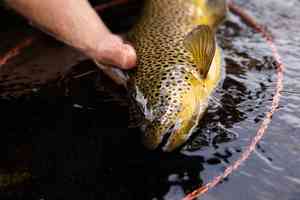





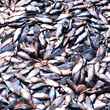
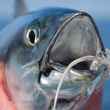








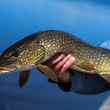




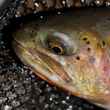

Comments
Rick Moore replied on Permalink
Question: looking for a smaller fast stiff fly rod for smaller trout streams.
Any recommendations, I also must be somewhat cost conscious.
Any suggestions?
Thank you!
Pages